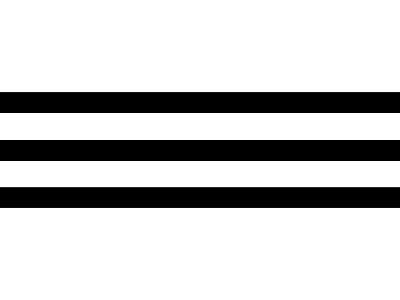Númra
Númric: Jötor Númra /jœthɔːr nuːmraː/
Berekric: Jötor Númrana /jœthɔːr nuːmraːna/
Þagralic: Unurn mó Númra /ʏnʏːrtn̥ mouː nuːmraː/
Þrínic: Númar /nuːmaːr/
Fjúnic: Nóðzin Númran /nouːðzɪn nuːmraːn/
Hmargic: Númm, Hnúmm /numː~n̥umː/
Mjúltic: Númar Irĥ /ɳuɱaʁ ɪʁx/
Númra is one of the main countries of Rúþría, a region in the northern Southlands in southern Borgalor, and home to the largest human population outside of their native Jælondis, to the point that most borgaloreans consider it the de facto center of human civilization today, having shifted away from Jælondis since the devastating Fell Wars four decades ago.
The country is bordered by Fjún to the west, Arikróa to the south and Hmarg to the east. Númra's capital is New Falas, located in a natural harbour at the mouth of the river Tarnúra to the north, and the current president (hemó) is Zasía Hnak Þúfsó.
Númra has a diverse culture -particularly in the cities-, renowned for its cuisine, art and industry, and its media and fashion have become quite popular in recent decades both in the Southlands and beyond.
Númrana eventually gained independence from Berekría as the population grew and the inhabitants' culture diverged from that of Berekría's due to living in a different environment and sheer distance from Jælondis. Now called Númra, the country was initially a monarchy, the exact type of which changed over time, until it was eventually abolished in favour of democracy, which has lasted with only minor changes to this day, though descendants of the old royal family still remain influential in many ways.
Ákar covers the area around the capital of New Falas to the north. The name is derived from the native trollish gnapic name Auha'ar, meaning Place of fur seals.
Ezafía covers the eastern part Númra that borders Hmarg, centered around the city of New-Monxas. Cottonsedge is grown there in great quantities, used to make textiles similar to our world's cotton as well as ingredients for the local cuisine.
Fúpra covers the northwestern coast, centered around the city of Jörkas.
Núprek covers the northeastern coast, centered around the city of Irþon, an important religious site for many Númrans due to the large number of temples and shrines found there.
Rik-Mjalól or South-Mjalól covers the southern hinterland of Númra, centered around the city of New-Hepra. Historically focused on raising sheep and draft horses and mining industry due to the climate being ill-suited for growing most crops, the region is now an important producer of Mandrakes using greenhouses.
Þók-Mjalól or North-Mjalól covers the heart of Númra, centered around the city of Jakría upon the lower Tarnúra River, and is the main agricultural region of the country.
Hmargic: Númm, Hnúmm /numː~n̥umː/
Mjúltic: Númar Irĥ /ɳuɱaʁ ɪʁx/
Númra is one of the main countries of Rúþría, a region in the northern Southlands in southern Borgalor, and home to the largest human population outside of their native Jælondis, to the point that most borgaloreans consider it the de facto center of human civilization today, having shifted away from Jælondis since the devastating Fell Wars four decades ago.
The country is bordered by Fjún to the west, Arikróa to the south and Hmarg to the east. Númra's capital is New Falas, located in a natural harbour at the mouth of the river Tarnúra to the north, and the current president (hemó) is Zasía Hnak Þúfsó.
Númra has a diverse culture -particularly in the cities-, renowned for its cuisine, art and industry, and its media and fashion have become quite popular in recent decades both in the Southlands and beyond.
History
Originally established as a colony of Berekría, a country once found on the southern Maralon Steppe, Númra or Númrana as it was then known provided the former with fur seal hides, alchemical ingredients and various ores and minerals, often while competing or outright warring with neighbouring colonies and native Trolls for land and resources.Númrana eventually gained independence from Berekría as the population grew and the inhabitants' culture diverged from that of Berekría's due to living in a different environment and sheer distance from Jælondis. Now called Númra, the country was initially a monarchy, the exact type of which changed over time, until it was eventually abolished in favour of democracy, which has lasted with only minor changes to this day, though descendants of the old royal family still remain influential in many ways.
Structure
Númra is dividived into six provinces.Ákar
Númric: Ákar /auːkhaːr/ Gnapic: Auha'ar /œiːhaʔaːɾ/Ákar covers the area around the capital of New Falas to the north. The name is derived from the native trollish gnapic name Auha'ar, meaning Place of fur seals.
Ezafía
Númric: Ezafía /ɛːzafija/Ezafía covers the eastern part Númra that borders Hmarg, centered around the city of New-Monxas. Cottonsedge is grown there in great quantities, used to make textiles similar to our world's cotton as well as ingredients for the local cuisine.
Fúpra
Númric: Fúpra /fuːphraː/Fúpra covers the northwestern coast, centered around the city of Jörkas.
Núprek
Númric: Núprek /nuːphrɛːkh/Núprek covers the northeastern coast, centered around the city of Irþon, an important religious site for many Númrans due to the large number of temples and shrines found there.
Rik-Mjalól
Númric: Rik-Mjalól /rɪːkh mjaːlouːl/Rik-Mjalól or South-Mjalól covers the southern hinterland of Númra, centered around the city of New-Hepra. Historically focused on raising sheep and draft horses and mining industry due to the climate being ill-suited for growing most crops, the region is now an important producer of Mandrakes using greenhouses.
Þók-Mjalól
Númric: Þók-Mjalól /θouːkh mjaːlouːl/Þók-Mjalól or North-Mjalól covers the heart of Númra, centered around the city of Jakría upon the lower Tarnúra River, and is the main agricultural region of the country.

Type
Geopolitical, Country
Capital
Government System
Democracy, Representative
Power Structure
Unitary state
Economic System
Market economy
Currency
Númran þab /θaːp/
Location
Official Languages
Related Ethnicities













Comments